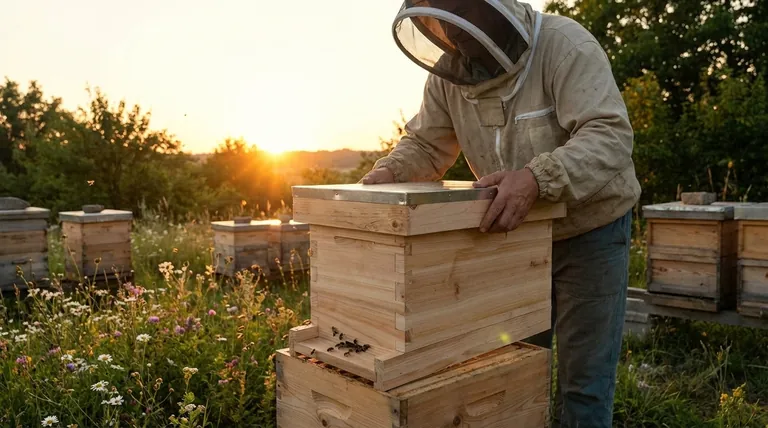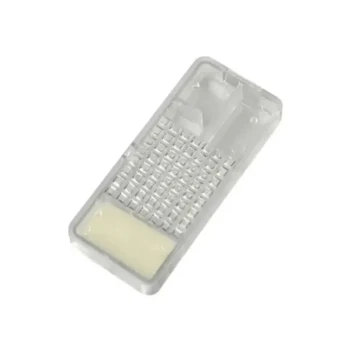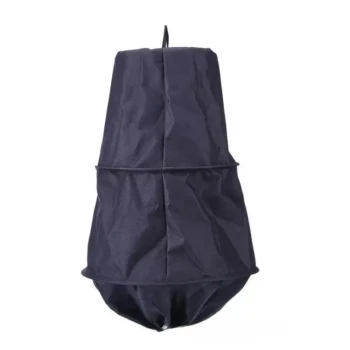For a successful transfer, you should pick up a nucleus colony (nuc) either very early in the morning before the bees begin flying or late in the evening after they have all returned for the night. The ideal season for acquiring a nuc is spring or early summer, as this provides the colony with ample time to build its population and resources before the onset of winter.
The timing of your nuc pickup is not about convenience; it is a critical step that directly impacts the strength and stability of your new colony. The goal is to move the entire bee population with minimal stress, setting them up for a successful transition into their new home.

Why Timing is Critical for a Successful Transfer
The specific time you choose to pick up your bees has significant consequences for the health of the colony and the success of your beekeeping efforts. It revolves around two core principles: capturing the full workforce and minimizing stress.
Capturing the Entire Colony
Honey bees are active foragers during daylight hours. A significant portion of the colony's adult population—the experienced foragers—will be out collecting nectar, pollen, and water.
Picking up a nuc in the middle of the day means you will be leaving thousands of these essential bees behind at the seller's apiary. They will return to an empty spot, and your new colony will be significantly weakened from the start.
By picking up the nuc when it is dark or cool (early morning or late evening), you ensure that all the foraging bees are inside the box. This maximizes the population you are purchasing and gives the colony its full strength in the new location.
Minimizing Transport Stress
Bees generate a substantial amount of heat. When confined to a small, often poorly ventilated nuc box, they are at high risk of overheating, especially during a warm day.
Transporting them during the cooler parts of the day reduces this risk dramatically. It keeps the cluster calm and minimizes the stress that can lead to agitation and even death within the colony.
Aligning with the Beekeeping Season
The time of year is just as important as the time of day. Spring and early summer are the prime seasons for colony growth.
During this period, queen breeders have mated queens readily available, and the abundance of natural pollen and nectar provides the fuel a new colony needs to expand rapidly. A nuc started in spring has the entire season to draw out comb, raise brood, and store honey for the coming winter.
The Pickup and Installation Protocol
A smooth transfer involves more than just showing up. Following a clear protocol ensures the bees arrive safely and orient themselves correctly to their new environment.
Before You Leave
Confirm the pickup time with your supplier. They will typically seal the entrance to the nuc box the night before or just before you arrive to contain the bees. Prepare a secure, ventilated spot in your vehicle where the nuc box will not tip over.
The Journey Home
Drive smoothly and ensure there is adequate airflow around the nuc box. Avoid leaving the box in a hot, parked car for any length of time. The goal is a calm, cool journey.
Arrival and Orientation
This is a crucial step that is often overlooked. When you arrive at your apiary, do not immediately transfer the frames.
Place the nuc box directly beside or on the stand where the permanent hive will be. Then, open the entrance. This allows the bees to exit, relieve themselves, and perform orientation flights. They will map the precise location of their home, which is essential for preventing them from getting lost later. Let them orient for at least a few hours; leaving them until the next day is even better.
Understanding the Trade-offs and Common Pitfalls
Ignoring the established best practices for timing can actively sabotage your new colony.
The Risk of a Midday Pickup
The primary consequence is simple: you lose a significant number of bees. You are paying for a five-frame nuc with a full population, and a midday pickup guarantees you will leave a large portion of that workforce behind, setting your colony back by weeks.
The Danger of a Late-Season Purchase
Acquiring a nuc in late summer or fall is a race against time. The colony has a much shorter window to build up its population and gather sufficient winter stores. While it can be done with intensive feeding and management, it is a high-risk scenario that often ends in winter losses, especially for new beekeepers.
Forgetting the Orientation Period
Immediately "dumping" the bees from the nuc box into a new hive body is jarring and disorienting. Many bees, especially those that did not perform an orientation flight, will become lost and fail to return to the new hive, further reducing your colony's population.
Making the Right Choice for Your Colony
Your goal is to give your bees the strongest possible start. Tailor your actions to ensure that happens.
- If your primary focus is maximizing colony strength: Always pick up your nuc very early in the morning or after dusk to ensure you get the entire foraging workforce.
- If your primary focus is long-term survival: Acquire and install your nucleus colony in the spring to give it the maximum time to build up before winter.
- If your primary focus is a smooth, low-stress installation: Allow the nuc to sit and orient itself at the new hive location for at least a few hours before transferring the frames.
By respecting the bees' natural rhythms, you are setting the foundation for a thriving colony from the very first day.
Summary Table:
| Key Timing Factor | Best Practice | Why It Matters |
|---|---|---|
| Time of Day | Early morning or late evening | Captures the entire foraging population, minimizing bee loss. |
| Season | Spring or early summer | Provides maximum time for colony buildup before winter. |
| Orientation Period | Allow bees to orient for hours (or overnight) | Prevents bees from getting lost after transfer to the new hive. |
Give your new nucleus colonies the strongest possible start.
At HONESTBEE, we understand that successful beekeeping begins with proper setup. Our wholesale-focused operations supply commercial apiaries and beekeeping equipment distributors with the durable, reliable supplies needed for a smooth nuc transfer and long-term colony health.
Contact our expert team today to discuss your apiary's needs and discover how our equipment can support your success.
Visual Guide

Related Products
- 5 Frame Wooden Nuc Box for Beekeeping
- Twin Queen Styrofoam Honey Bee Nucs Mating and Breeding Box
- Automatic Heat Preservation 6 Frame Pro Nuc Box for Honey Bee Queen Mating
- Plastic Transporting Bee Packages and Nuc Boxes for Beekeeping
- Styrofoam Mini Mating Nuc Box with Frames Feeder Styrofoam Bee Hives 3 Frame Nuc Box
People Also Ask
- What are the benefits of moving nuclei around the apiary? Master Strategic Hive Management
- What is the most common type of standard nuc? The 5-Frame Nuc Explained
- How should the nuc be installed in the apiary? Ensure Colony Success from Day One
- What is a common feature of many 5-frame nuc boxes? The Integrated Feeder for Efficient Colony Growth
- What are the benefits of using nucs for beginning beekeepers? Ensure a Successful First Hive with a Head Start



















